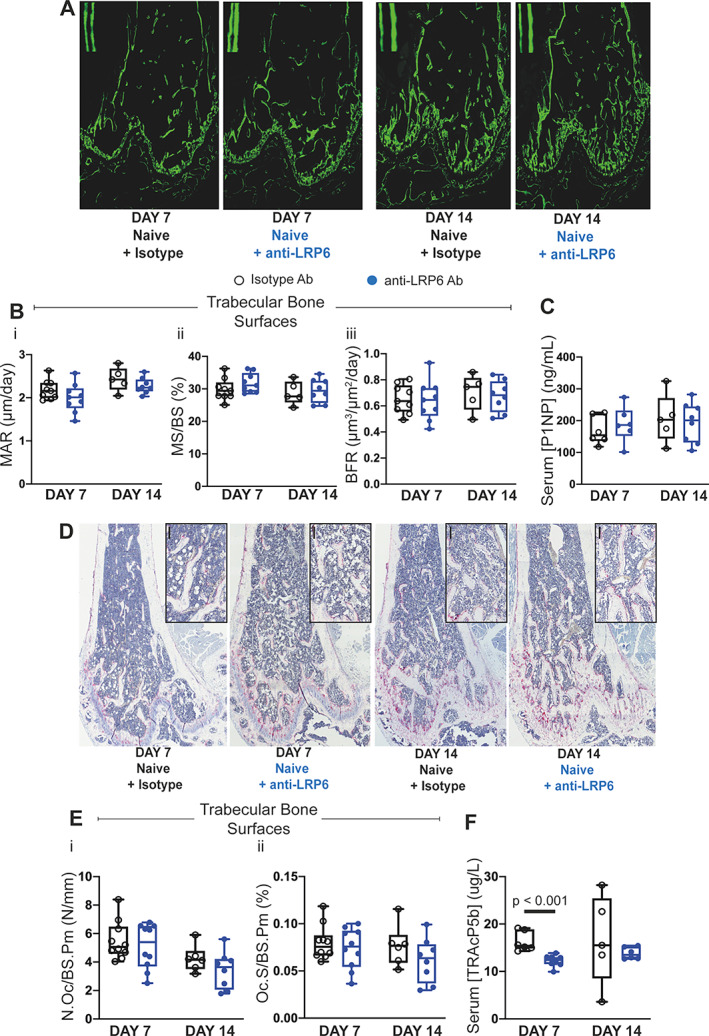Fig. 2.

Anti‐LRP6 antibody increased trabecular bone volume in femurs primarily through reduced bone resorption in naïve mice. (A) Representative calcein double‐labeled sections of femurs from each treatment group (isotype or anti‐LRP6 Ab) harvested at their respective time points (day 7 or 14). (B) (i) MAR (μm/day), (ii) mineralizing surface (MS/BS, %), and (iii) bone formation rate (BFR, μm3/μm2/day) measured on trabecular surfaces within femurs of naïve mice treated with either isotype or anti‐LRP6 Ab for 7 or 14 days. (C) Quantification of serum P1NP (ng/mL) as an indication of systemic expression of bone formation in naïve mice treated with either isotype or anti‐LRP6 Ab for 7 or 14 days. (D) Representative images of TRAP‐stained sections of femurs harvested from naïve mice treated with either isotype or anti‐LRP6 Ab for 7 or 14 days. Small black bars represent 100 μm. (E) Quantification of (i) number of osteoclasts (N.Oc/BS.Pm, N/mm) and (ii) osteoclast surface (Oc.S/BS.Pm, %) per trabecular bone surfaces in naïve mice treated with either isotype or anti‐LRP6 Ab for 7 or 14 days. (F) Quantification of serum TRAcP5b (μg/L) as an indication of systemic expression of bone resorption in naïve mice treated with either isotype or anti‐LRP6 Ab for 7 or 14 days. Results plotted as mean ± SD. Ab = antibody; MAR = mineral apposition rate.
